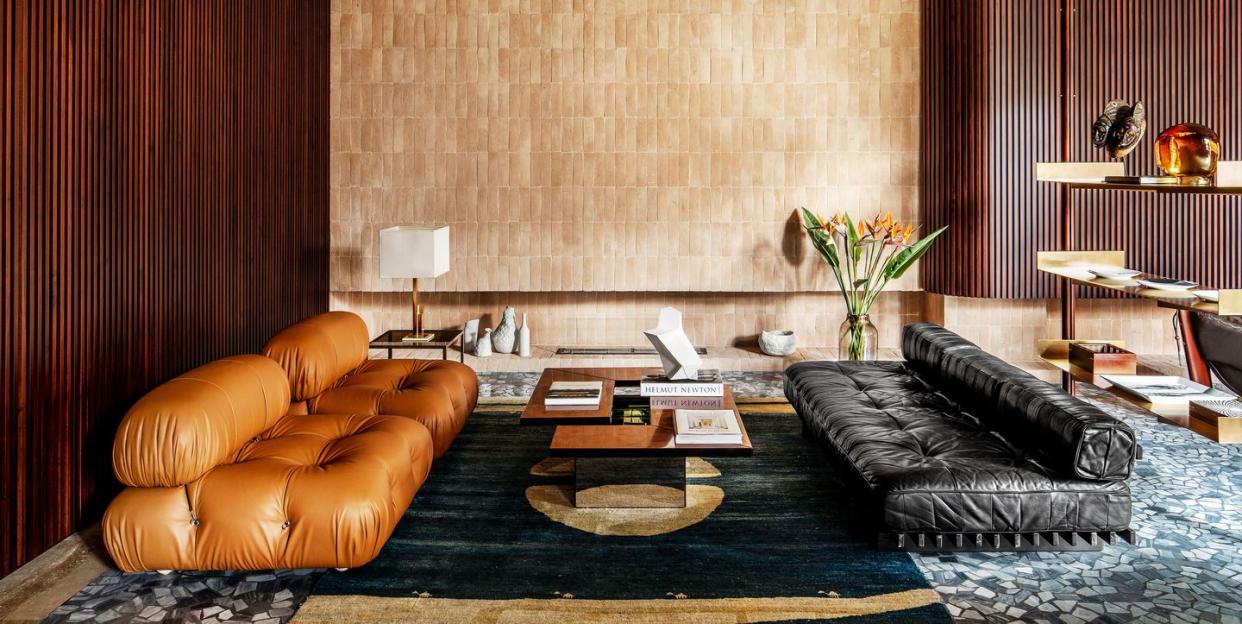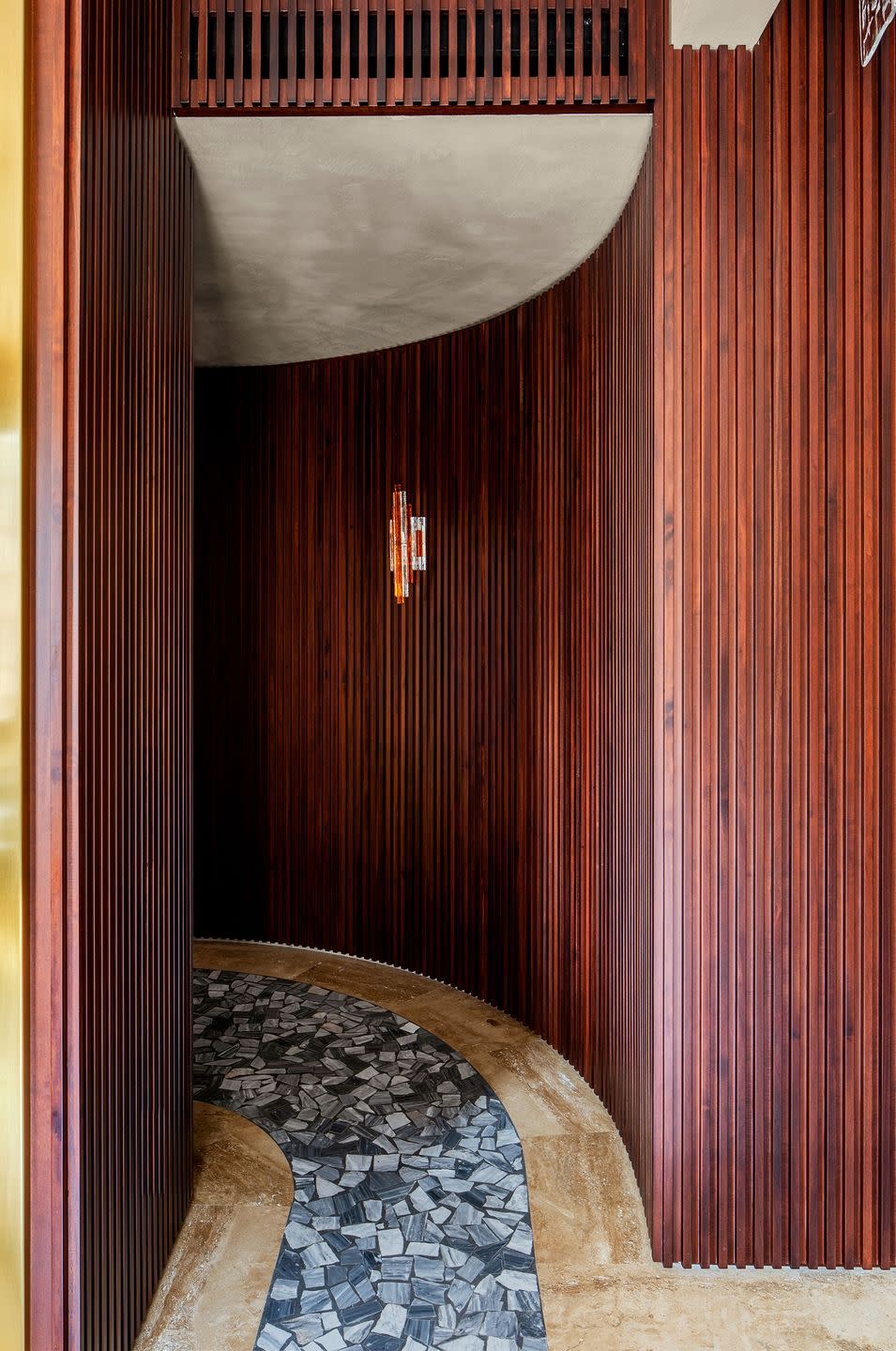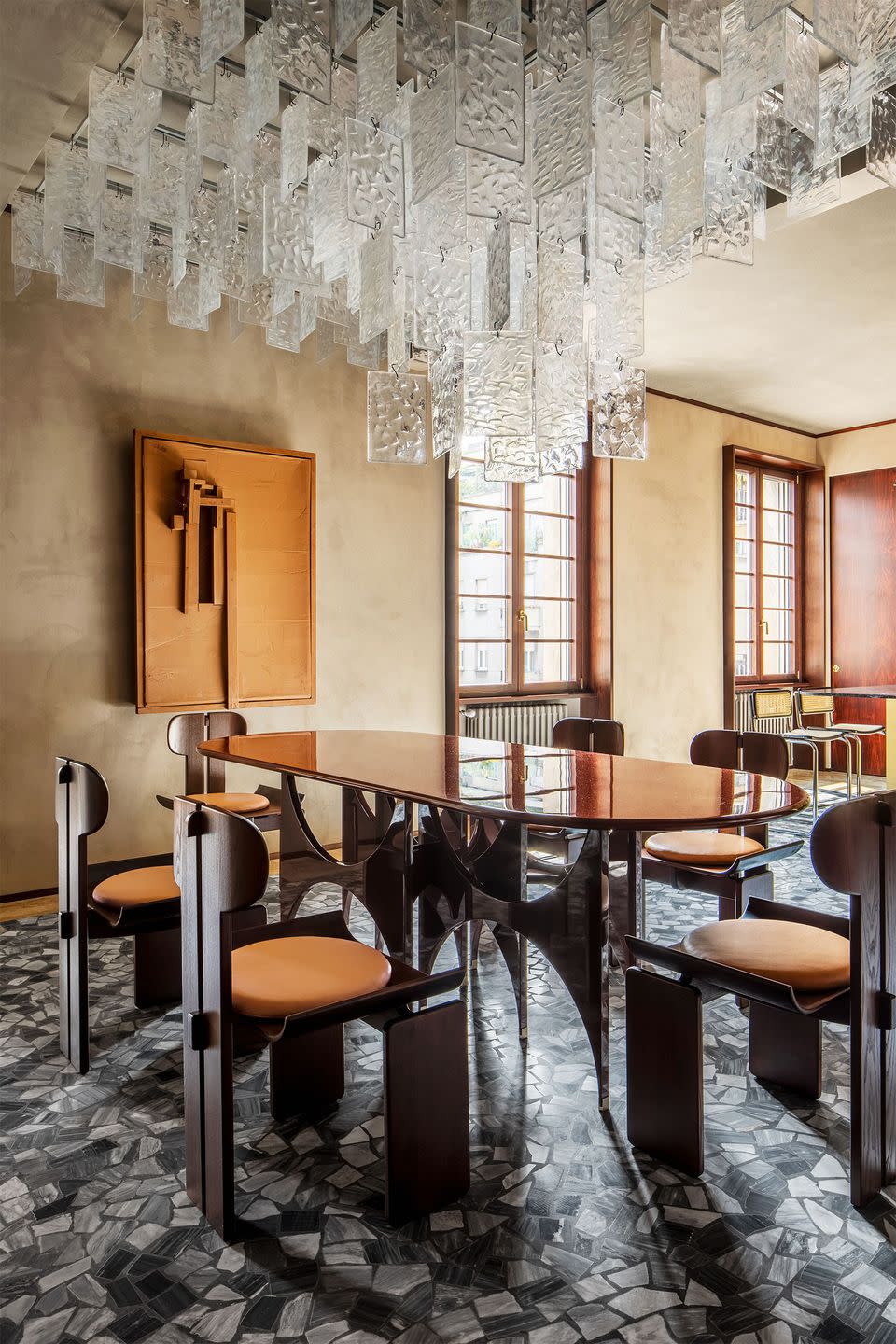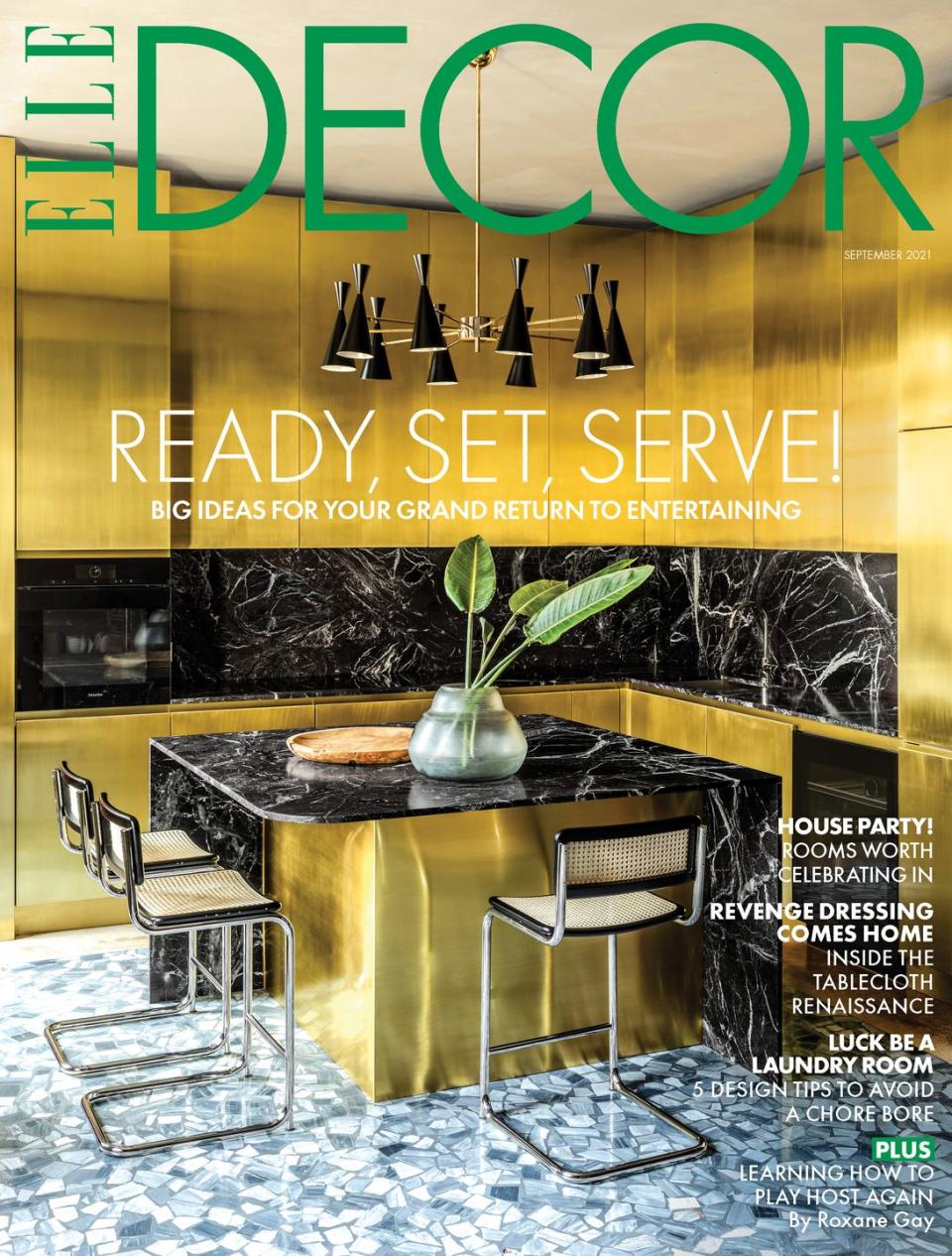You’d Never Guess This Super-Stylish Milan Apartment Was Inspired by an Alpine Chalet

"Hearst Magazines and Yahoo may earn commission or revenue on some items through the links below."
The prospect of a gut renovation would for many designers be an enticement. It is, after all, a chance to try new ideas, rehash old ones that weren’t fully realized in past projects, or collaborate anew with an oft-used fabricator. But for Hannes Peer, a Milanese architect and designer whose South Tyrolean roots lend him a cross-cultural air even in his native Italy, history cannot be restaged.
Though the designer started his firm just over a decade ago, his deep knowledge of architectural history comes across immediately; he studied in the school of architecture at the renowned Polytechnic University of Milan. Peer grew up around artists and, as the child of sculptor Ursula Huber, he has been experimenting with materials since an early age, studying other people’s work and reinterpreting it into something new and his own.

“I am not concerned with having a signature style,” Peer says, an attitude that was encouraged by his experience working for Pritzker Prize winner Rem Koolhaas at his firm OMA. While most of the big-name “starchitects” produce eye-catching buildings that are easily identifiable, OMA’s designs are united instead by their grounding in architectural theory rather than their adherence to a house style. So while the calm neutrality Peer shows in this space is somewhat of a departure for a designer whose work is often bright and baroque, it fit what his clients, Natalia and Roberto Ortello, were looking for. The couple had envisioned their Milan home, a three-bedroom apartment in a 1920s Art Deco building in the city’s Porta Romana neighborhood, as a kind of urban alpine chalet. The concept was especially dear to Roberto, whose creative work as the CEO of fashion house N°21 (pronounced “Numero Ventuno”) revolves around healthy doses of shape, color, and pattern.

The idea of an imagined mountain retreat appealed to the couple not only as a protective refuge, but also as a neutral aesthetic ground for Natalia, who is Latvian, and Roberto, who was brought up in Naples, to raise their two young children. Peer set about bringing in references that bridge both their heritages: Birchwood reminiscent of the Baltic Highlands works in tandem with a cotto brick to line the living room walls. Elsewhere, the surfaces were coated in an eco-friendly resin that helps to create an earthy, pan-European tranquillity the couple desired.
Peer generally prefers to layer on top of an existing architecture, but upon first viewing the apartment, which underwent a complete overhaul in the 1980s, he found that its oblique angles and unusual spaces meant starting from scratch. With a freshly gutted apartment, the designer had to divine some aspects that had been erased. “This apartment inhaled history where history was lost,” Peer says.

Peer begins a project by assessing the problems inherent in the space—such as an awkward corridor—with solutions geared toward the needs of the client. For the side entrance, Peer designed a curved foyer that gently guides guests into the communal living area, thereby resolving the layout issue that the previous designer had attempted to solve with triangular rooms. The slatted-wood boiserie hovers over the marble-and-walnut travertine floor and continues around the living space, concealing storage and a large television that becomes the focal point on game night.

Peer’s references to the past are precise, if not immediately apparent. The Palladiana terrazzo floor, for example, is of Bardiglio marble—a local material that echoes the prewar building’s lobby and anchors the space to both Milan and interwar modernism. Similarly, the casement doors and windows meld two sources of inspiration: the horizontal grilles of Rudolph Schindler’s California houses and the projecting door jambs seen at the offices of Piero Portaluppi, the Milanese phenomenon behind Villa Necchi, the famed modernist house from Luca Guadagnino’s 2009 film I Am Love.
To connect the idea of a chalet to the Art Deco building, Peer suggested his clients look at the alpine cottages of the Italian modernist Carlo Mollino and Georgia O’Keeffe’s summer home in New Mexico, along with the countryside estate of Villa Cavrois by French architect Robert Mallet-Stevens. This allowed them to develop a style within which Peer could create everything from the dining table and chairs to the custom kitchen in brushed brass and Rosso Levanto marble.

Peer’s top-to-bottom bespoke design has had positive results, both for the Ortellos and his other clients. The goal here might never have been to restage history, but Hannes Peer is certainly working to create a history of his own. It’s one that resonates: After their first night in the apartment, Roberto and Natalia’s children reported gleefully that it’s as if they’d always lived there.

This story originally appeared in the September 2021 issue of ELLE Decor. SUBSCRIBE
You Might Also Like

